The various major record companies tended to have distinctive designs for the promotional or demonstration copies of the singles that they issued. These can often give a strong clue as to where a given label originated. The examples shown below are intended as a rough guide. This is a big page, so if you have an old, slow computer - like mine - you may have to hit the 'Refresh' button to get all the illustrations on properly.
* * * * *
EMI

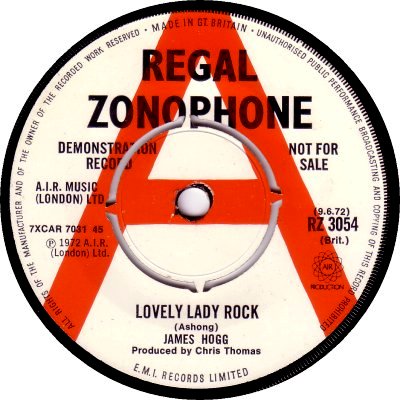
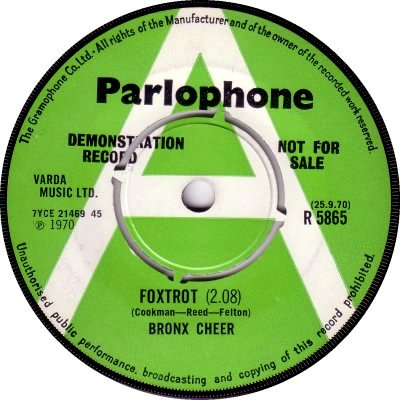
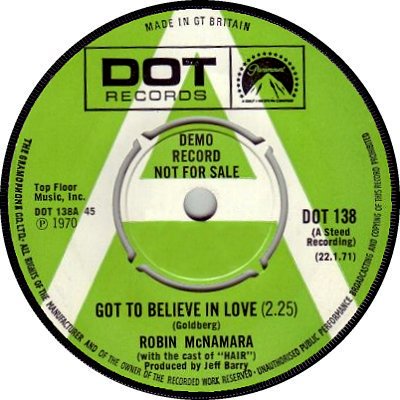
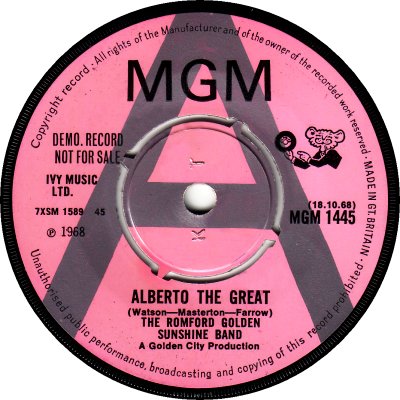
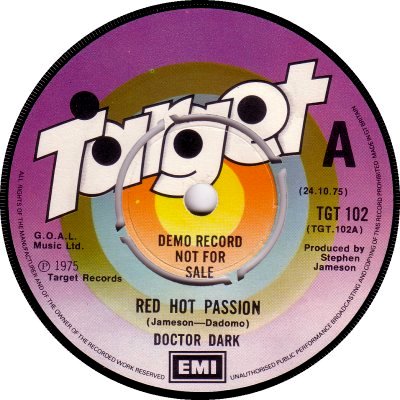

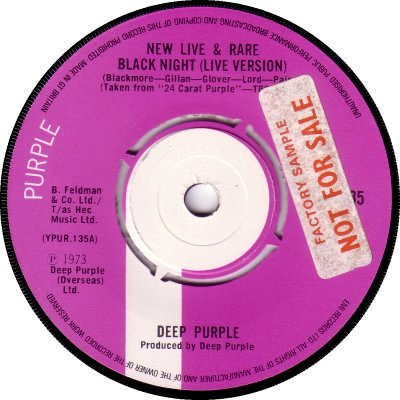
EMI had several different styles of demo label down the years. The white-label- with-a-red-A (1) mainly dates from the early '60s, though for some reason it was used on Regal Zonophone singles into the early '70s (2). In 1967 a green-with-a- white-A label was brought in (3, 4); this lasted until c.1972. For a time, c.1968, certain labels - MGM and Verve - had the same design in a vivid pink colour with a silver 'A' (5). From 1972 on, ordinary labels were used: they were overprinted with the words 'DEMO RECORD NOT FOR SALE' and a much shrunken black 'A' (6, 7). For a time in the mid '70s sticky labels with 'FACTORY SAMPLE NOT FOR SALE' on them were used - the example shown (8) dates from 1977 despite the '1973' on the label. Similar labels had been used in the late '50s and early '60s. The words 'SOLD IN THE U.K. SUBJECT TO RESALE PRICE CONDITIONS. SEE PRICE LISTS' on issued singles from the late 1960s seems to be unique to EMI labels.
* * * * *
PYE


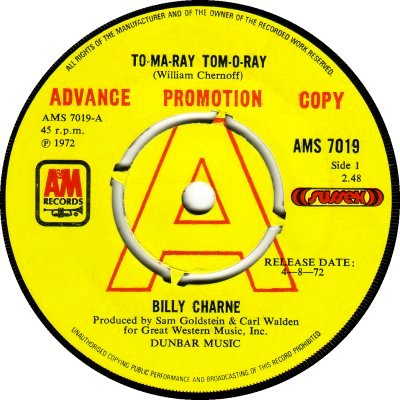

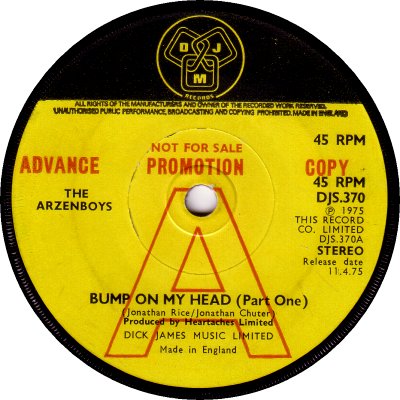
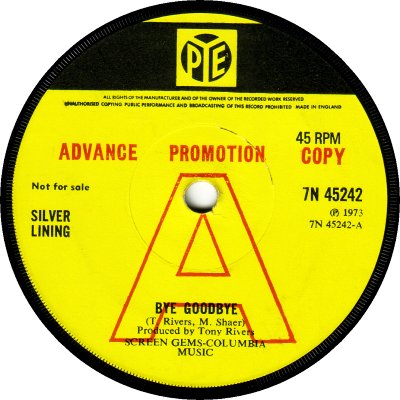
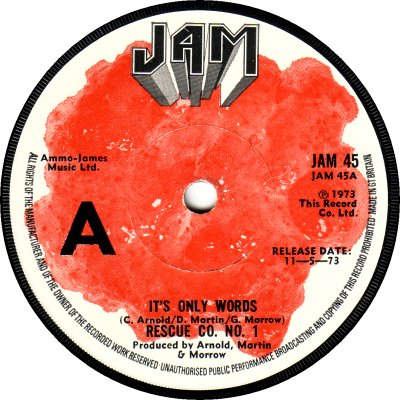
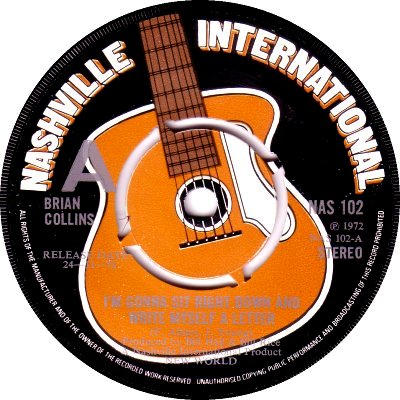


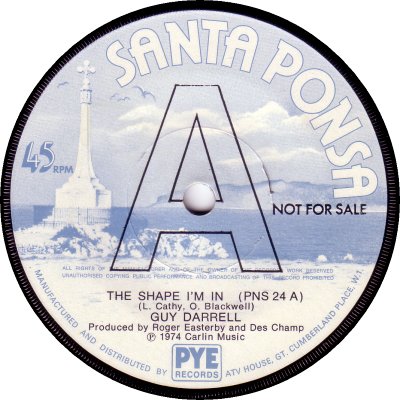
In the early '60s demo singles from the Pye group had logo-free white labels with only basic information on them (1). From 1967 until c.1969 the standard layouts of the various labels were used, but the original colours were replaced by a uniform yellow; the words 'ADVANCE PROMOTION COPY' were printed on the label, in black, and there was a medium-sized hollow black 'A' in the centre of the label. Song titles and artist credits were printed in a rather small retiring font: the Orange label (2) gives an example of these credits, though it retained its original colour and it's hollow 'A' is smaller than the norm. From 1970-c.75 the hollow 'A' turned red and dropped to the bottom of the label; the legend 'ADVANCE PROMOTION COPY', now in red, was printed above them, and the artist and title credits resumed their normal form. Release dates could be printed (3) or applied with a hand-stamp (4), or they might be left off altogether (6). On later examples the words 'NOT FOR SALE' also appear (5). A few labels from the early '70s kept their original design and colouring and merely had the release date and a medium-sized 'A' printed on them (7, 8). From c.1976 the yellow labels were replaced by ordinary ones with a large black 'A' printed in the centre; the words 'Not for sale' in upper or lower case were generally included (9), sometimes with an accompanying 'PROMOTION COPY' (10). Occasionally the 'A' was hollow (11).
* * * * *
CBS
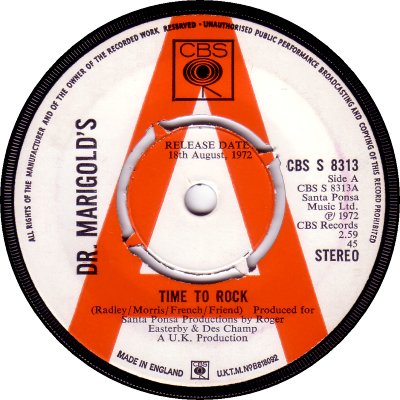
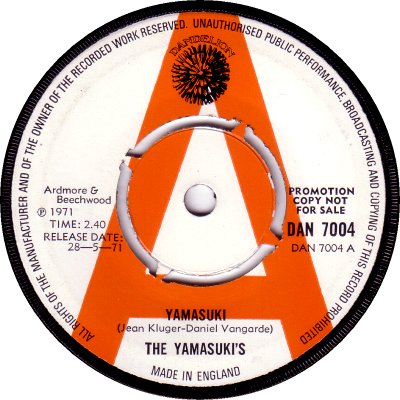
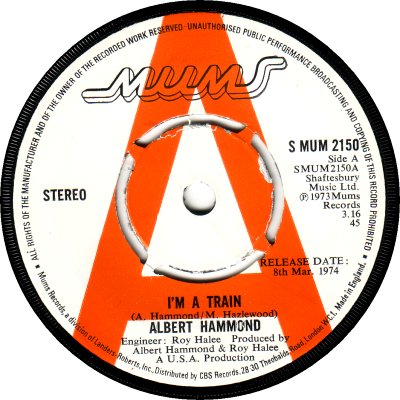

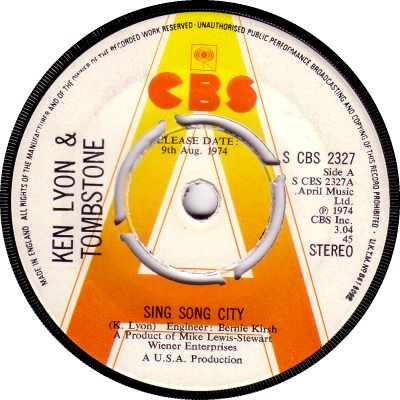
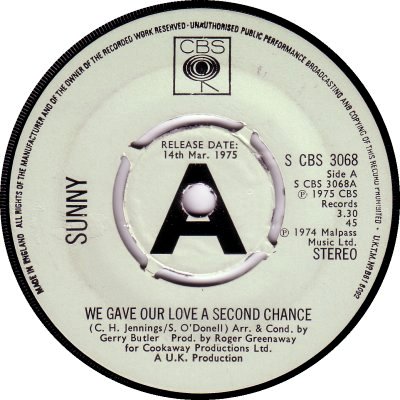
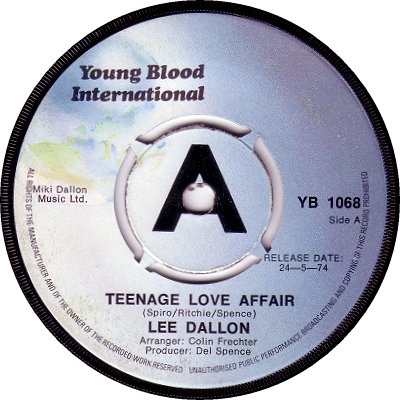

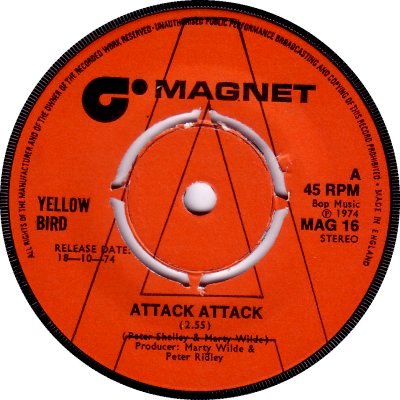
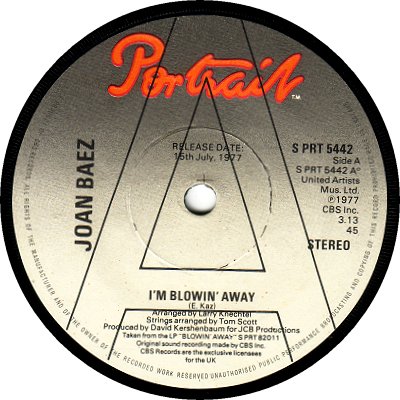

Early CBS singles, dating from first half of the '60s, were distributed by Philips; demo copies had one of Philips's 'SAMPLE RECORD NOT FOR SALE' stickers on them. When CBS started to manufacture and distribute their own records, c.1966, demo copies were white with a large orange 'A' on them (1). The other labels in the group seem to have had their own designs: for example demos on 'Go' had a white label with a hollow green 'A', while NEMS, Direction and SNB had a small central 'A' and either a stamped date or, after 1968, the words 'RELEASE DATE', followed by the date, on the label - the same kind of thing that appears on the later grey CBS design (6). The orange-A-on-white design spread to several other CBS family labels (2, 3) in the early '70s, while from 1973 onwards others, including the Atlantic / Reprise / Warner group labels, had a hollow red 'A' either on a white label or on one with its original colouring (4). This large hollow 'A', in red or black, was to endure for the rest of the decade on labels other than CBS itself (9, 10, 11). To return to the actual CBS label: in 1974 the orange 'A' on CBS demos turned yellow-and-orange (6). Later that same year, and for a while in the following year, a new design was tried: CBS demo labels were now grey with a small central black 'A' and the release date (6). The format extended to at some of the distributed labels (7), and survived there for several years (8), but as far as the main label was concerned the small black 'A' proved to be short-lived: by the middle of 1975 the white label with the yellow-and-orange-A had returned.
* * * * *
PHILIPS / PHONOGRAM
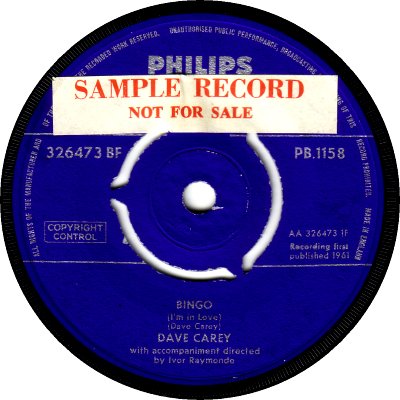


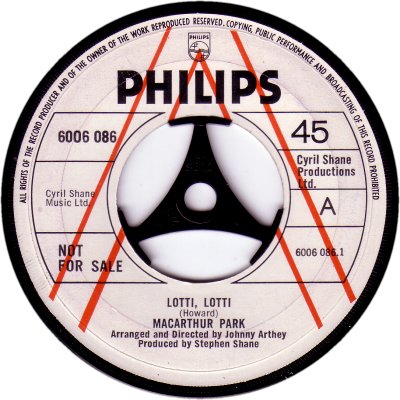
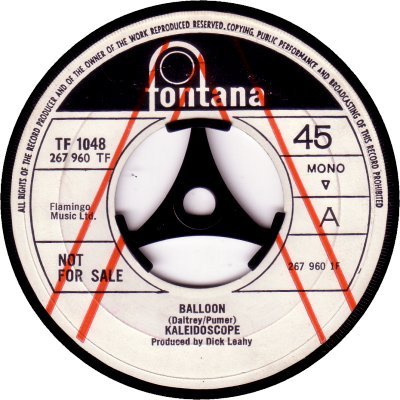
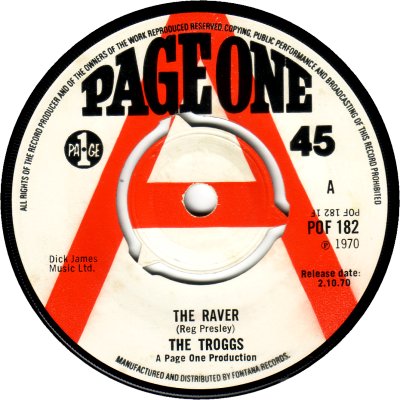
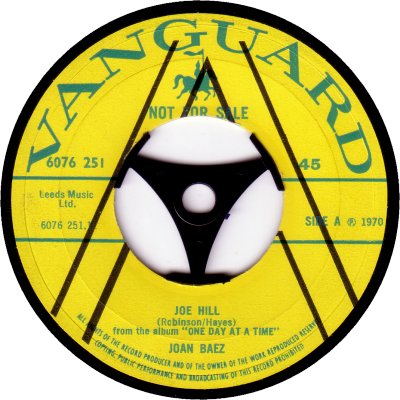
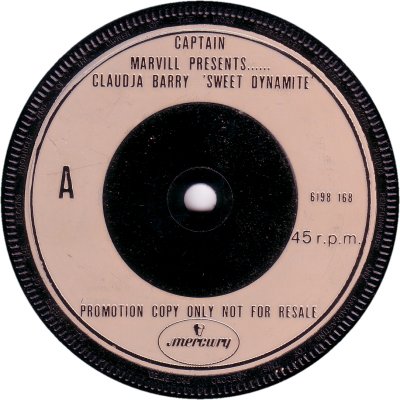
Philips group demo records from that early '60s were merely issues with white stickers on them; the stickers bore the legend 'SAMPLE RECORD NOT FOR SALE', in red (1). By the middle of the decade special labels had been adopted: white ones with black printing and a large red 'A' (2, 3, 4, 5). Generally the 'A' was hollow; in the case of Page One singles, at least, it was full (6), very like the EMI design - though the press-out centres of Philips group singles had three 'pibs' (the little bits joining the centre to the rest of the record; if there is a proper word for them I don't know it) as opposed to the four of EMI pressings. Again, there were exceptions: for example, Vanguard singles kept their colour and had a black hollow 'A' (7), while Nepentha singles seem just to have had Polydor's 'SAMPLE RECORD' stickers affixed to them. In 1972 the Philips group was renamed Phonogram; the following year Phonogram and Polydor combined their manufacturing and distribution facilities, under the name of Phonodisc. From that time on, the vast majority of demos seem to have lacked any distinctive marking; though occasionally specific demo pressings were made, probably for special promotions (8). The easiest way to tell that a label from the 1970s is a member of the Philips / Phonogram family is to look at the catalogue number: the majority of the company's labels had seven-digit numbers, the first digit being '6' - for example, Vertigo (6159-000), Tangerine (6121-000), Fresh Air (6121-100), and Philips itself (mainly 6006-000). Injection moulded labels are a pointer towards membership of the Phonogram or Polydor groups, though Phonodisc pressed records for other companies, such as Transatlantic.
* * * * *
POLYDOR
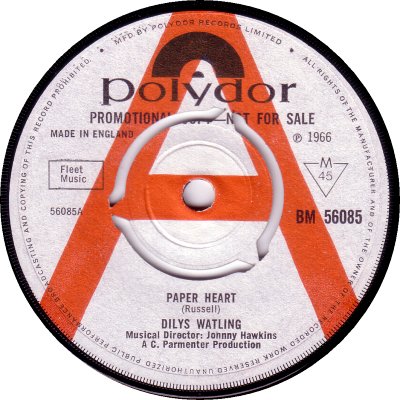
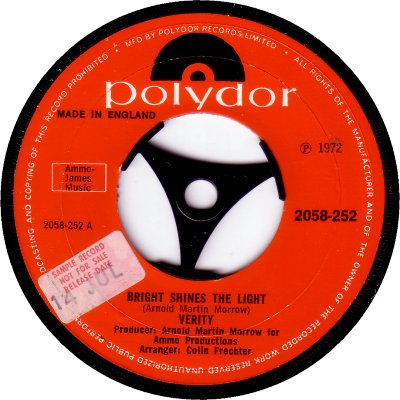
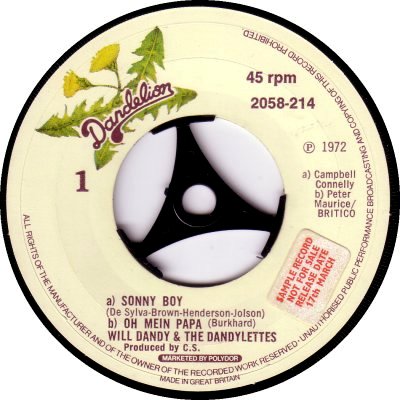
Polydor demos from the mid and late 1960s were white with large red 'A's, very similar to the EMI design; though they had the legend 'PROMOTIONAL COPY - NOT FOR SALE' on them, as opposed to EMI's 'DEMONSTRATION RECORD NOT FOR SALE'. Again, as with Philips group labels, they had three 'pibs', or central joins, to the four of the EMI pressings. By c.1970 these demo labels had been discontinued: demo copies of Polydor family singles were now just the standard issue with a small sticker attached to them - the sticker had the words 'SAMPLE RECORD NOT FOR SALE RELEASE DATE' on it in red. The actual release date could either be printed (2) or hand-stamped (1) on the sticker. Polydor and Phonogram combined their manufacturing and distributing facilities in 1973, under the name of Phonodisc; from that time on, all but a few demos seem to have lacked any distinguishing marks. The easiest way to tell that a label from the 1970s is a member of the Polydor group is to look at the catalogue number: the majority of the company's labels had seven-digit numbers, the first digit being '2' - for example, Track (2094-000), Blue Horizon (2096-000), Atlantic / Atco (2091-000), Verve (2009-000) and Barn (2014-000). As always, there were exceptions, including CTI (CTSP-0) and BBC (RESL-0). In 1978 Polydor abandoned the various 2000-000 series and adopted combinations of letters-plus-numbers - such as POSP-0 - for its labels.
* * * * *
RCA


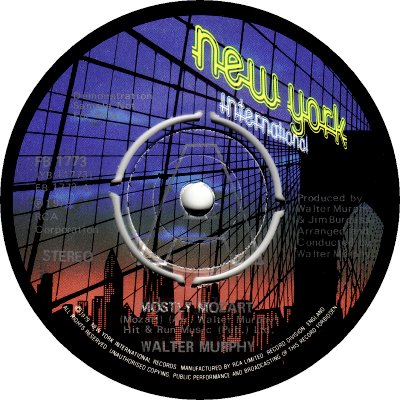


RCA singles from the early and mid '60s were manufactured and distributed by Decca, so demo copies naturally followed the standard Decca demo designs of those times, with a large central hollow silver 'A' and silver 'pedestrian crossing' lines around the rim of the label. When the company started manufacturing and distributing its own group of labels it was satisfied with a modest design for its demos: they were merely standard issue labels with a small hollow 'A' in the centre, and the words 'Demonstration Sample Not For Sale' added. If the other credits on the label were in black, so were the 'A' and the extra writing; if they were silver, so were the 'A' and the writing. As ever, there were exceptions: the Oats label, for example, had a solid 'A' in the usual place, but it lost the 'Demonstration Sample' and gained a release date.
* * * * *
DECCA
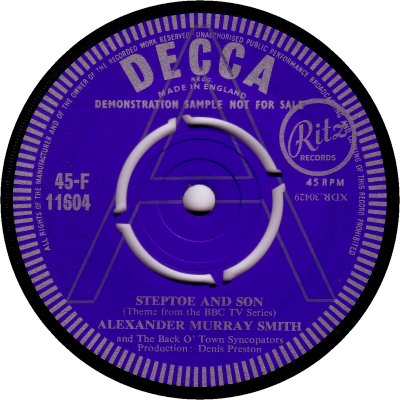
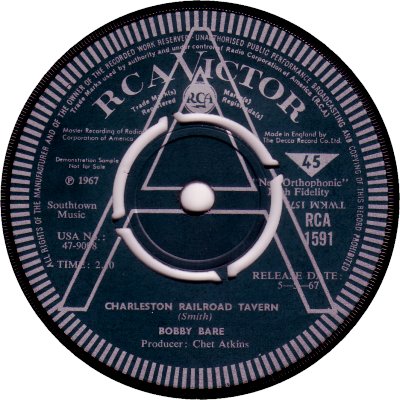
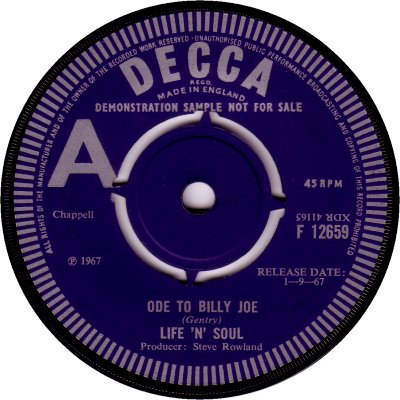



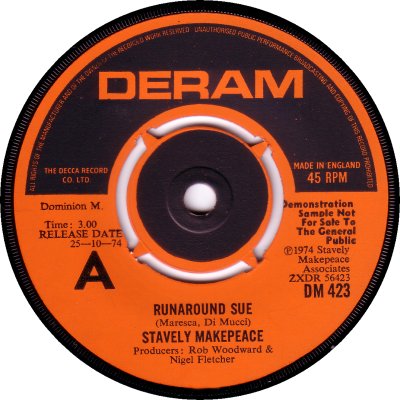
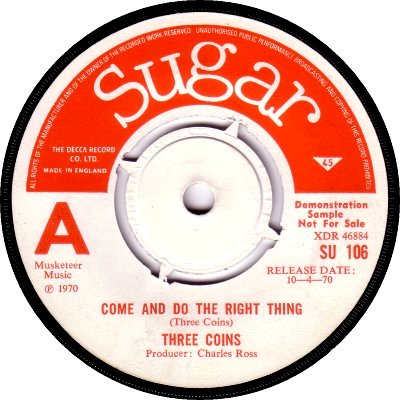

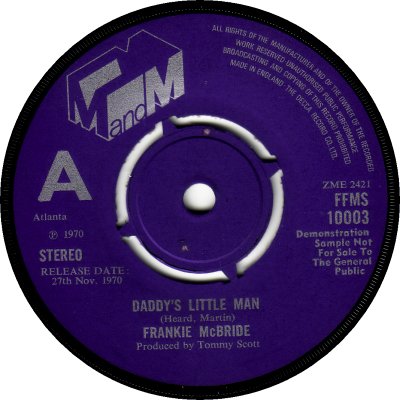


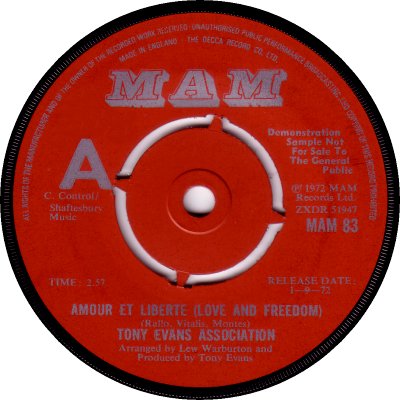

Decca family demos in the mid '60s were distinguishable by the pedestrian-crossing stripes around the rim of the labels. Initially these were accompanied by a change of label colour and a big hollow 'A' in silver or black (1, 2); in 1967 the 'A' shrank, filled in and moved (3, 4). In the 1970s demos on the actual Decca label had a rather similar design to the Deram label (5); this lasted to the end of the decade. The demos of Decca family labels showed much more variety in the '70s. At first they retained the same colour and layout as issues, but they had a modestly sized 'A' and the legend 'Demonstration Sample Not For Sale To The General Public', or variations on it, printed on them (8, 9, 10). In 1972 most of these labels lost their original colour and turned red (12, 13, 14) though for some reason York singles were exempted from the change (11). Deram demos ploughed their own furrow: they kept the same design as the issues but changed the colour - from the '60s until c.1972 they were pale-blue-and-white (6); later they were orange-and-black (7).
* * * * *
PRESIDENT

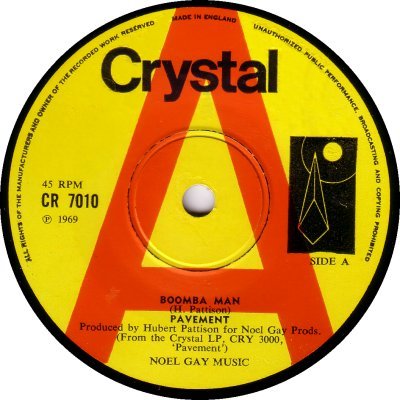


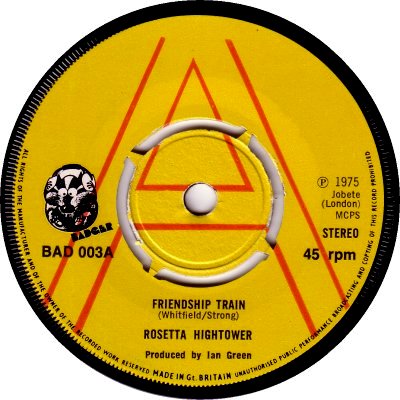
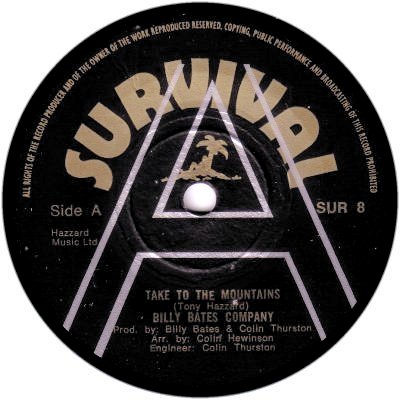
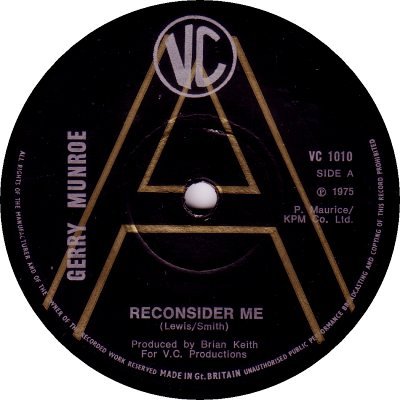
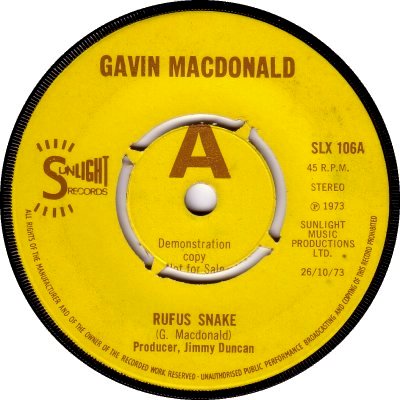
One of the biggest and most interesting of the independent record companies, along with Transatlantic, President sheltered an array of obscure labels under its umbrella. Demo copies of all of them kept the same colour and layout as the issues but had a large 'A' overprinted on them (1, 2). In the '60s and early '70s the 'A' was red and was filled in, but from c.1974 the 'A' was hollowed out and its colour varied - darker labels received rather attractive-looking silver (4, 6) or gold (7) ones, while lighter ones tended to stick with red (3, 5). As usual, there were exceptions (8), but in general a large stout open-ended 'A', coupled with either a solid centre or four 'pibs' - joins - is a good indication of a President family label. A label with that sort of 'A' but with an oversized spindle hole, or only three 'pibs', is likely to belong to the Philips group.
* * * * *
WEA / KINNEY



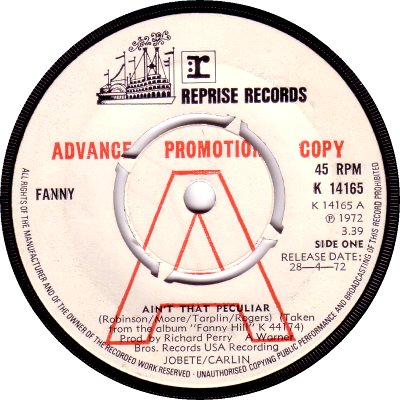

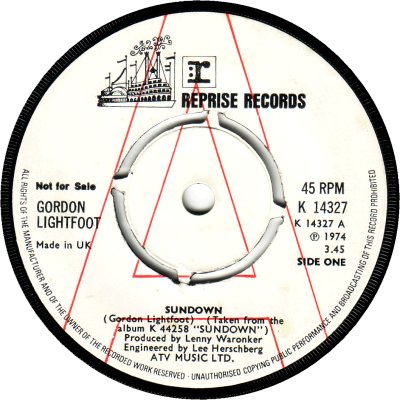


Somewhat surprisingly, most WEA group demos don't seem to have had any special markings - not the demos from the time when WEA was responsible for its own distribution, better to say; that is, from 1976 onwards. Singles from the '60S and early and mid '70s, when Decca, Pye, CBS or EMI were manufacturing and distributing the various labels, had the same kinds of special promo labels as the other Decca, Pye, CBS or EMI singles of the time. The period from mid 1971 to sometime in 1973 was an exception: during that time the Kinney group labels had demo labels with Pye-style markings on them. However, whereas (with the odd exception) the Pye-group demos had yellow labels, those of the Kinney corporation were either white (1, 2, 4) or in their original colours (3, 5). From 1973 onwards these markings were replaced by the same large hollow 'A' that was found on demos on Epic and on other labels in the CBS group (6). Post-1976 WEA singles often had a letter 'A' on them, either full or hollow, but this appears on issues and seems to be merely an indication of which side was the A-side; in 1978, however, a few singles appeared with proper promo labels (7). The promo for the Monty Python single shown above (which Alan Daulby has kindly supplied) had a 'PRO' suffix, but I have yet to find any other examples of that practice (8). The clue that a label belonged to the WEA family was the catalogue number: the majority had a 'K' prefix followed by a five figure number. Sometimes smaller labels shared the K-16000 numerical series with Warner Brothers, or Atlantic's K-10000 series; sometimes they had their own, as in the case of Discreet (K-19200), Kwanza (K-19500), and Antic (K-11500). Occasionally the 'K' prefix was replaced by other letters, as in the case of Raft (RA-18500) and Rolling Stones (RS-19000). Needless to say, there were exceptions, such as Laser (LAS-0) and Lightning (LIG-500, GIL-500), which did away with both the 'K' and the five figure numbering altogether.
* * * * *
TRANSATLANTIC
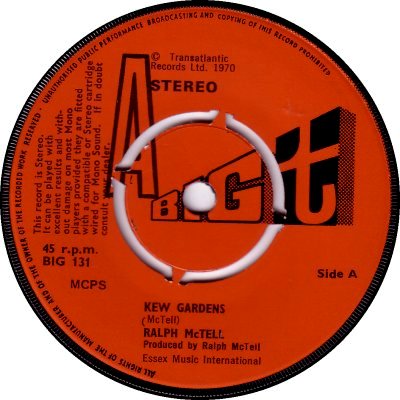
During its independent existence in the 1970s Transatlantic doesn't seem to have marked its demo singles in any way. A modest silver or black 'A' often appears on labels, but it seems to be there just to show which is the 'A' side; apparently its presence doesn't indicate that the record is a demo. Early issues may be an exception to this. The last few issues, when the label had become part of Logo and was being handled by RCA, have demos with typical RCA markings, as shown in the RCA section above. During the late '60s and early '70s when Transatlantic's singles appeared on the 'Big T' label, promos generally had a narrow hollow black 'A' on them, though the first few issues had blank white labels with the titles and credits handwritten on to them.
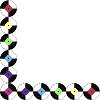
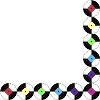
Copyright 2007 Robert Lyons.

